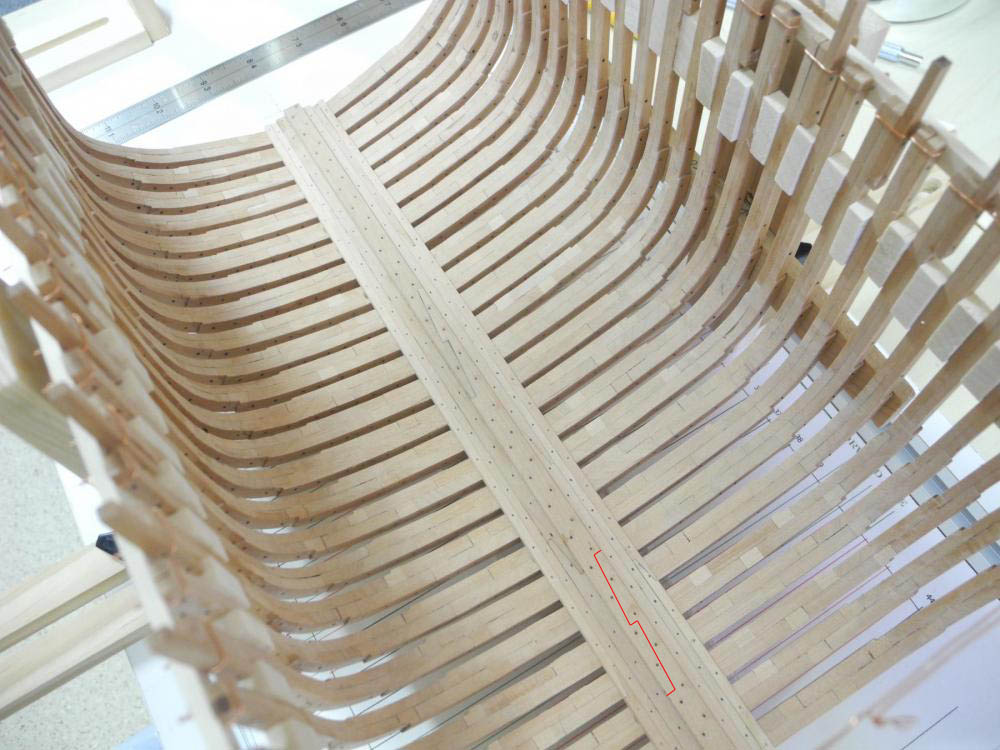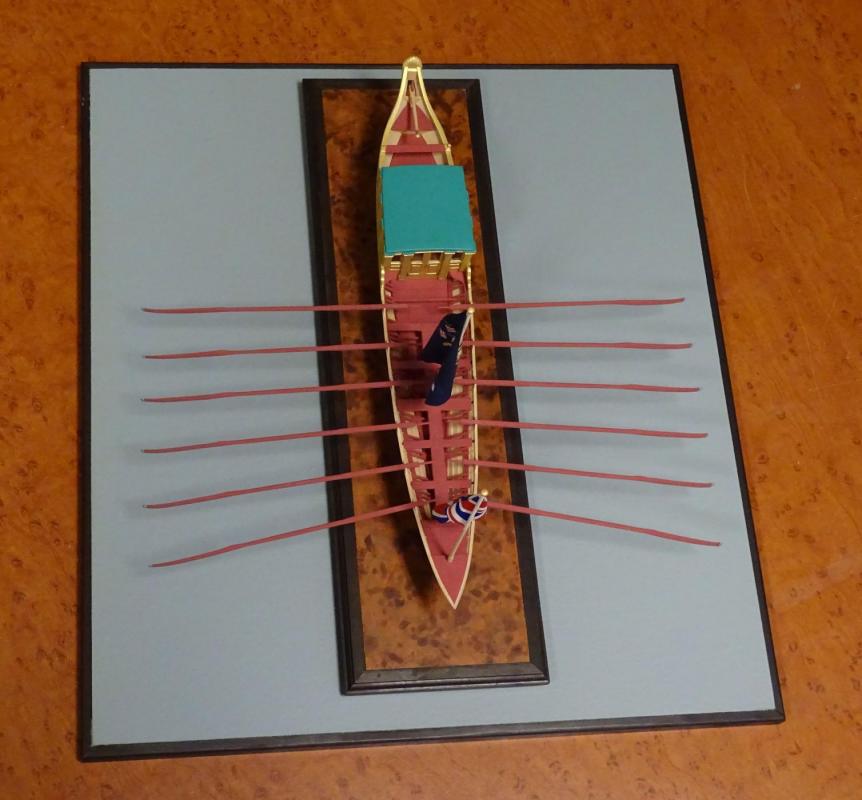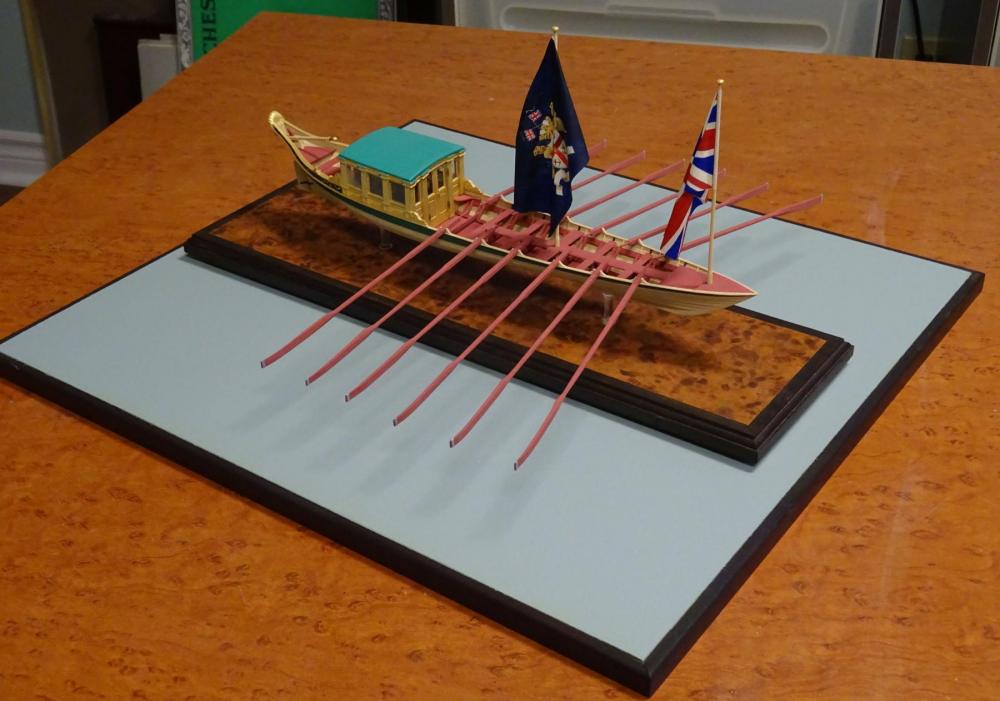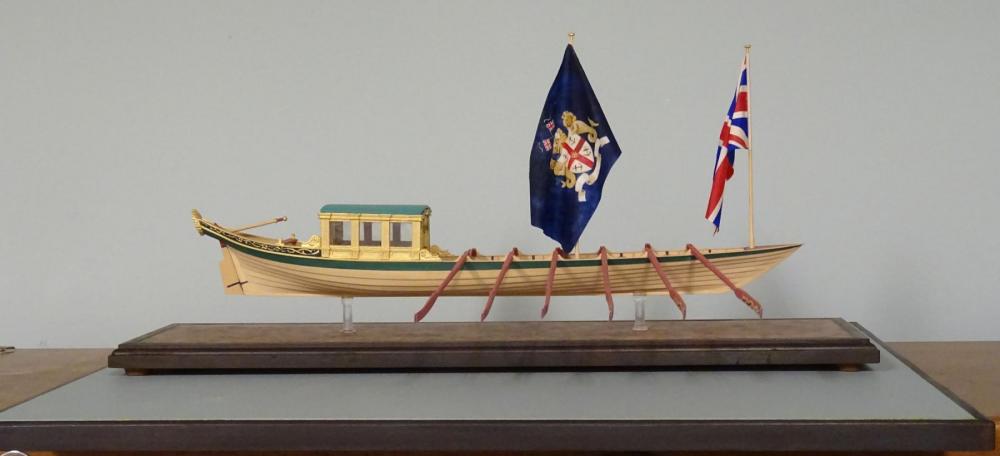-
Posts
13,274 -
Joined
-
Last visited
Content Type
Profiles
Forums
Gallery
Events
Everything posted by druxey
-

HMS Naiad 1797 by albert - FINISHED - 1/48
druxey replied to albert's topic in - Build logs for subjects built 1751 - 1800
Lovely looking and great progress, Albert. If you are planning on planking the lower counter, it's easier to do this before adding the wale planking. -
To stiffen SilkSpan, dilute acrylic paint or matt medium - no need for nasty organic volatiles!
-
Well, I hope that the charges are inert! Neat solution to the problem of unscrewing the fuses without damaging them. Well done.
-
I am reminded of an anecdote about Oscar Wilde. In company one evening, he made one of his witty remarks. Someone laughed and said "I wish I'd thought of that!" Oscar replied, "Oh, you will, you will!" I'll think of cutting bands to exact length that way soon, Ed.
- 3,618 replies
-
- young america
- clipper
-
(and 1 more)
Tagged with:
-
Cutting the bands to length using your method is a brilliant idea, Ed! Thank you.
- 3,618 replies
-
- young america
- clipper
-
(and 1 more)
Tagged with:
-
I've used SilkSpan for sails and flags. There is a booklet on this technique from SeaWatchBooks: Swan, Volume IV, Sailmaking Supplement that may help.
-
I think, while you are correct, Michael, in saying the damp towel will expand the wood; once the humidity level returns to ambient, the wood will shrink back again. This treatment is only a temporary fix, unfortunately.
- 889 replies
-
Interesting conundrum, Bill. Two out of three sources don't show this port. The VdV and Boston images look more accurately rendered than the Payne.... The more forward-pointing catheads of that era look as if they would be almost immediately above such a port, if it existed. My inclination would be to omit it. However, its's your model, your call! Beautiful work again, Bill. It's nice to see the head of your model finally being populated!
- 382 replies
-
- sovereign of the seas
- carving
-
(and 1 more)
Tagged with:
-
Lovely metalwork, as always, Ed. You could always make another one for blackening....
- 3,618 replies
-
- young america
- clipper
-
(and 1 more)
Tagged with:
-

Pandora by marsalv - FINISHED - 1:52
druxey replied to marsalv's topic in - Build logs for subjects built 1751 - 1800
Very nice monograms indeed, Marsala. How did you make and apply them? -
I'm sure that this is a disappointment to you. However, none of us reach perfection. Somewhere in every model, lurks an 'oops'. One possible (non-destructive) solution might be this: the actual scarph will be hidden under the mast step. As the bolting pattern is regular, could you scribe a scarph in the correct position and slightly darken this with a fine pencil point?
- 649 replies
-
- dunbrody
- famine ship
-
(and 2 more)
Tagged with:
-
I'm sure that much is salvageable, Ben. Just get out the isopropanol bath!
- 889 replies
-
Impressively researched and well modelled, Dick. Just catching up with your last few posts.
-

Pandora by marsalv - FINISHED - 1:52
druxey replied to marsalv's topic in - Build logs for subjects built 1751 - 1800
That is a lot of machining! Well done, Marsalv. -
'Positively final farewell appearance!' So the old theatre posters read. And this is true for the Greenwich Hospital barge. The sub-base has been made and finished, and so is this log. My profound thanks to all who looked in, 'liked' and commented. You are a great world-wide network of craftspeople with whom I am proud to be associated. Happy model-making! Serious enquiries of interest only for acquiring this model are invited.
- 641 replies
-
- greenwich hospital
- barge
-
(and 1 more)
Tagged with:
-
Nice photo: it should go on the flap or rear of the next volume's dust jacket!
- 3,618 replies
-
- young america
- clipper
-
(and 1 more)
Tagged with:
-

Caroline's bottom
druxey replied to GrantGoodale's topic in Building, Framing, Planking and plating a ships hull and deck
I might add that perhaps 'pease' was intended to spell 'peace', as Britain was not at war at the time. Either way, a pease/peacetime bottom is still a mystery! -
Another possibility is to have a ledge above (below, when inverted!) the line of the gunwale, inset the by thickness of the frames. Then you can glue the frame extensions to the ledge's side and cut them off when the planking is completed. It would only not work if there is tumblehome to the hull.
-
Beautifully rendered, Glenn! Your posts are one of the highlights of my week. Thanks for sharing.
-

Caroline's bottom
druxey replied to GrantGoodale's topic in Building, Framing, Planking and plating a ships hull and deck
Interesting possibility for 'pease'/'petit pois'. The reference I came across was dated July, 1753. "...a pease Coat bottom upon her, which will last very well until Spring." This was for a small sloop. The reference to spring suggests something less permanent than copper nails, though.
About us
Modelshipworld - Advancing Ship Modeling through Research
SSL Secured
Your security is important for us so this Website is SSL-Secured
NRG Mailing Address
Nautical Research Guild
237 South Lincoln Street
Westmont IL, 60559-1917
Model Ship World ® and the MSW logo are Registered Trademarks, and belong to the Nautical Research Guild (United States Patent and Trademark Office: No. 6,929,264 & No. 6,929,274, registered Dec. 20, 2022)
Helpful Links
About the NRG
If you enjoy building ship models that are historically accurate as well as beautiful, then The Nautical Research Guild (NRG) is just right for you.
The Guild is a non-profit educational organization whose mission is to “Advance Ship Modeling Through Research”. We provide support to our members in their efforts to raise the quality of their model ships.
The Nautical Research Guild has published our world-renowned quarterly magazine, The Nautical Research Journal, since 1955. The pages of the Journal are full of articles by accomplished ship modelers who show you how they create those exquisite details on their models, and by maritime historians who show you the correct details to build. The Journal is available in both print and digital editions. Go to the NRG web site (www.thenrg.org) to download a complimentary digital copy of the Journal. The NRG also publishes plan sets, books and compilations of back issues of the Journal and the former Ships in Scale and Model Ship Builder magazines.






